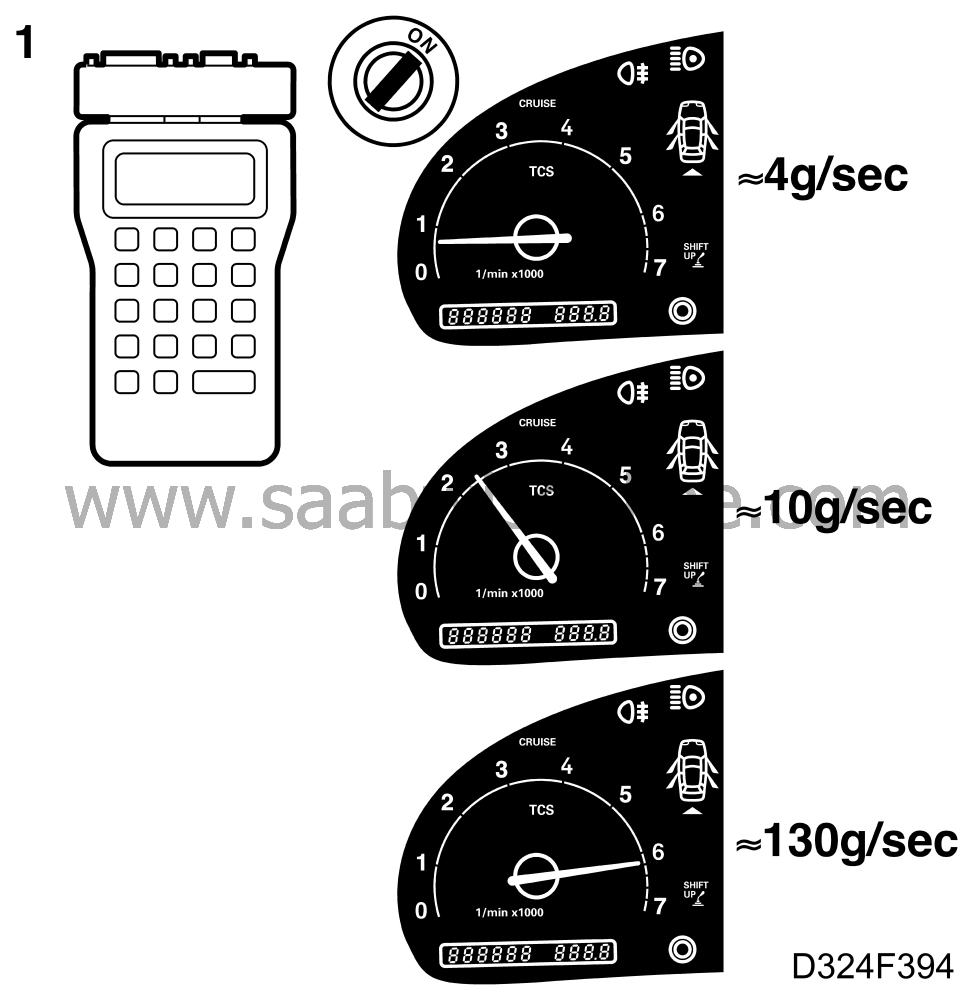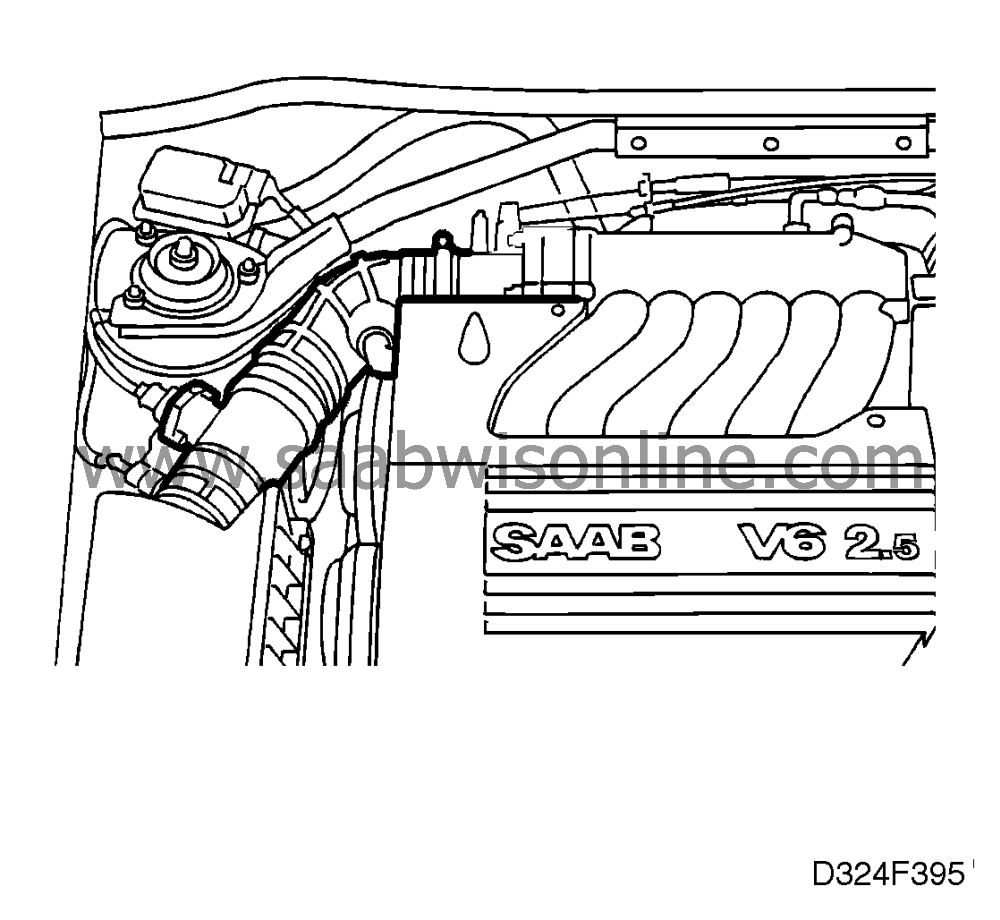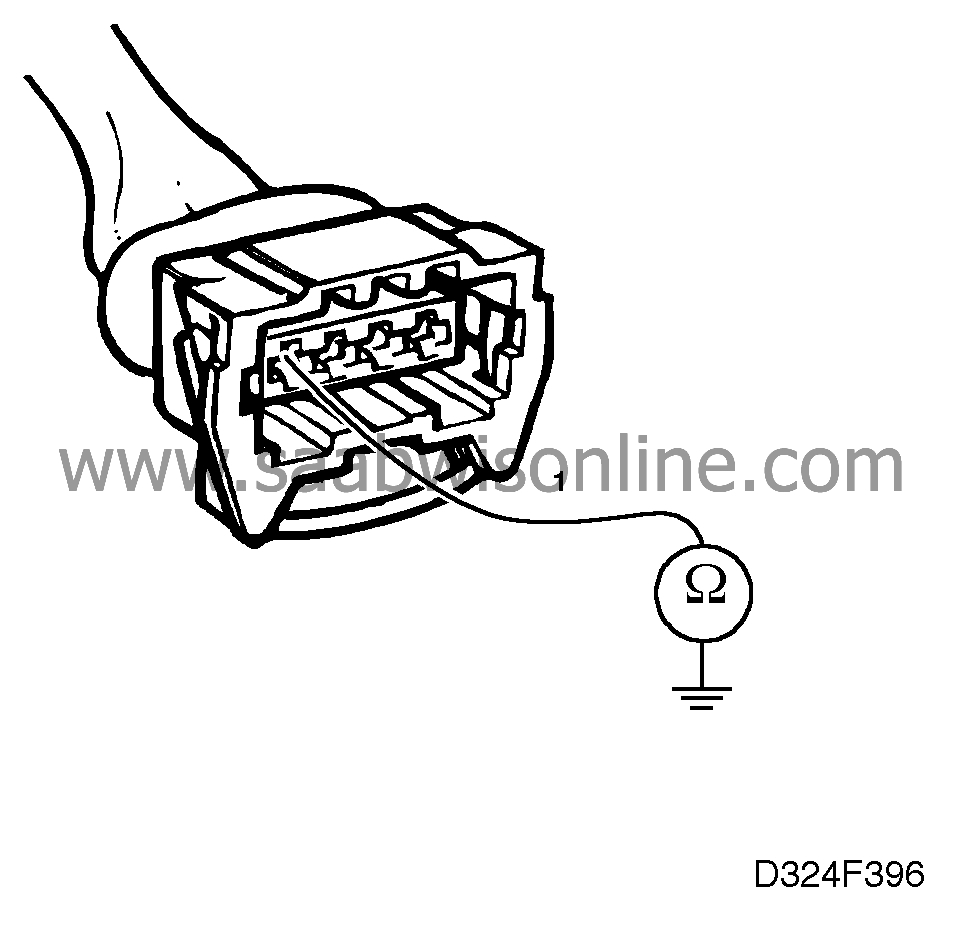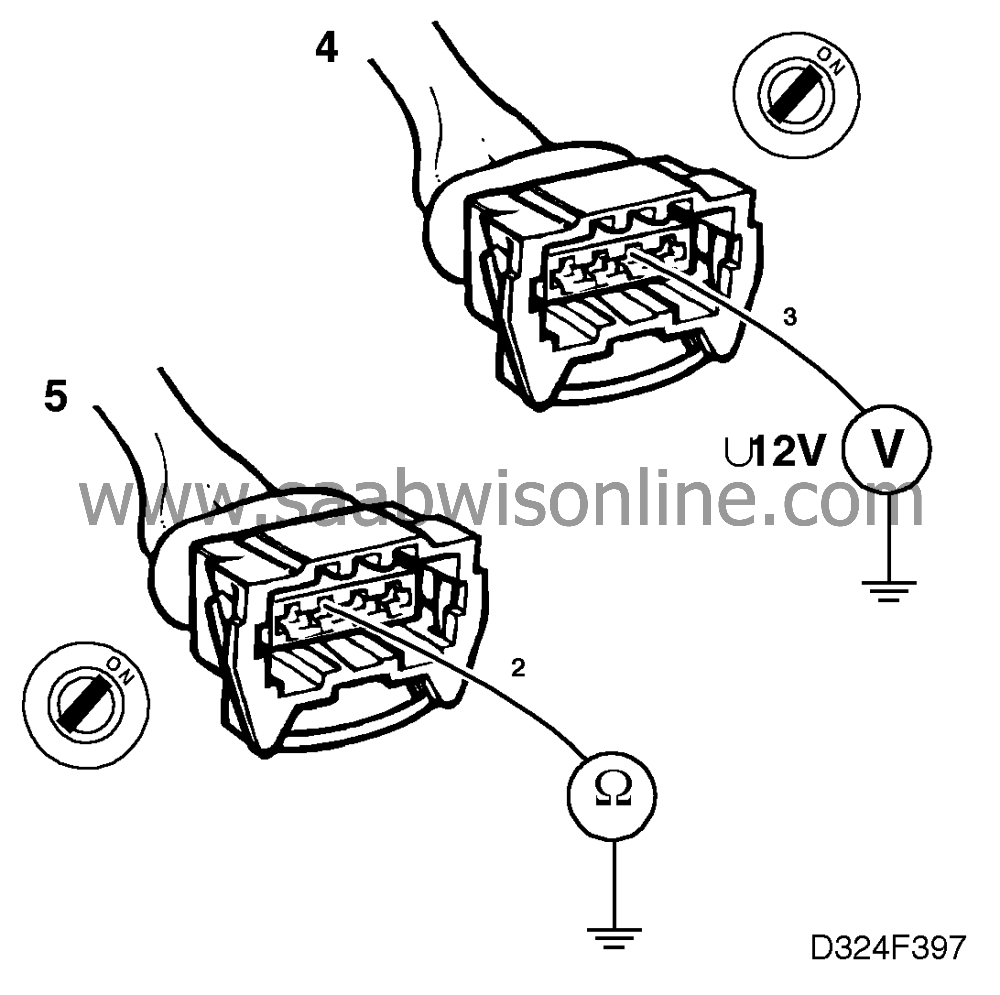P0102,P0103
Symptom: Reluctance to start, poorer drivability and high fuel consumption.
CHECK ENGINE lamp (MIL) on.
Mass air flow sensor, input to control module low/high,
no continuity or shorting to ground/batt+

Fault symptom
Reluctance to start, poorer drivability and high fuel consumption.
CHECK ENGINE lamp (MIL) on.
Condition
Air flow less than about 0.8 grammes per second at engine speeds
above 520 rpm
or
greater than about 165 grammes per
second
at engine speeds below 6520 rpm.
|
1.
|
With the ISAT command
"INDUCTION AIR MASS" in the "READ
FUNCTIONS" menu, check that the following readings can be obtained on
the display:
approx. 4 gram/s - approx. 0.8 V - idling
approx. 10 gram/s - approx. 1.2 V - 2500 rpm (no load)
approx. 130 gram/s - approx. 3.9 V - full throttle (no load)
|
|
2.
|
Check the induction system for leakage.


|
|
3.
|
Check that pin 1 of the mass air flow sensor is properly grounded. If
it is not, check the lead between pin 1 and grounding point G7P.

Mass air flow sensor, input to control module low/high,
no continuity or shorting to ground/batt+

|
|
4.
|
With the ignition switch in the Drive position, check that battery
voltage is present on pin 3 of the mass air flow sensor.
If it is not, check the lead between pin 3 and pin 87 of the main relay.
|
|
5.
|
With the ignition switch in the Drive position, check that pin 2 of the
mass air flow sensor is properly grounded.
If it is not, check the lead between pin 2 and pin 30 of the control module.
|
|
6.
|
With the ignition switched off, connect a BOB between the MOTRONIC
control module and the wiring.

Start the engine and check that current is present on
pin 7 of the control module, as follows:
- approx. 0.8 V when idling
- approx. 1.2 V at 2500 rpm (no load)
- approx. 3.9 V at full throttle (no load)
The above voltages may vary somewhat, depending on
engine temperature, current consumption, etc. Should the mass air flow
sensor be defective, the differences in the voltage readings obtained
will probably be fairly wide. In such case, change the mass air flow
sensor.
|
|
7.
|
If no fault has been detected after carrying out the above checking
procedure, clear any diagnostic trouble codes, drive the car on the
road and check whether the trouble code is generated afresh.
|
|
8.
|
If the fault still persists, turn to
 for further diagnostic
instructions.
for further diagnostic
instructions.
|


 for further diagnostic
instructions.
for further diagnostic
instructions.






